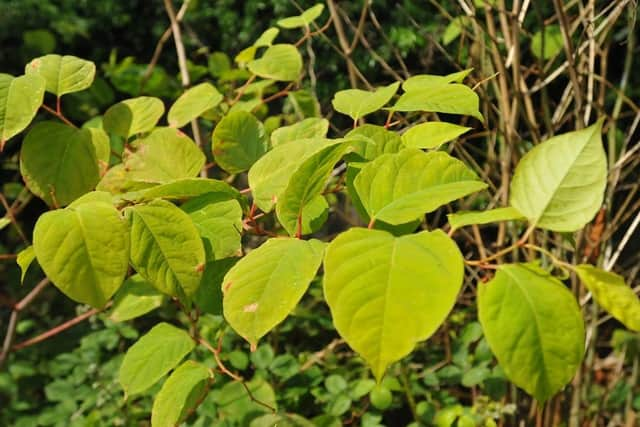Japanese knotweed in Yorkshire: The areas in Yorkshire most affected by Japanese knotweed, how to find out if your property is affected by the plant and how to stop it from spreading
Japanese knotweed grows fast and its stem growth is renewed every year from the stout, penetrating rhizomes. Even though the plant was originally introduced to Britain as an ornamental garden plant, it is considered invasive and problematic for wildlife and property structures.
Its strong anatomy will push through expansion joints in concrete, cavity walls, weaken the broken mortar between paving slabs or bricks and has a tendency to damage drains and sewers; whilst structural damage is rare in most residential areas, the plant can become risky if left untreated. Japanese knotweed also forms dense thickets that crowd and shade out native vegetation; this reduces species diversity, changes natural ecosystems and negatively affects wildlife habitats.
Advertisement
Hide AdAdvertisement
Hide AdUnique features of the plant to look out for include reddish-purple fleshy shoots emerging from crimson-pink buds at ground level. They grow into dense stands of tall canes, similar to that of bamboo, which can reach heights of 2.1m (7ft) and the canes have characteristic purple flecks, and produce branches from nodes along its length. The leaves are heart or oval-shaped and up to 14cm in length.


Which areas are most affected by Japanese knotweed in Yorkshire?
These are the areas at high risk of Japanese knotweed occurrences according to a UK Heat Map produced by Environet.
1 - Rawmarsh (306 occurrences)
2 - Tinsley (168 occurrences)
3 - Meersbrook (152 occurrences)
4 - Hillsborough (140 occurrences)
5 - Darnall (132 occurrences)
6 - Heptonstall (89 occurrences)
7 - Worrall (89 occurrences)
8 - Slaithwaite (88 occurrences)
9 - Barnsley (81 occurrences)
10 - Oughtibridge (79 occurrences)
11 - Handsworth (75 occurrences)
12 - Killamarsh (74 occurrences)
13 - Fulwood (70 occurrences)
14 - Stannington (69 occurrences)
15 - Marsden (50 occurrences)
16 - Ripponden (55 occurrences)
17 - Ecclesfield (45 occurrences)
How to find out if your property is affected by Japanese knotweed
According to Environet UK there are simple ways for property buyers and sellers to check if the property is affected by Japanese knotweed.
If you are buying or selling a property, it is important to find out whether or not the house is affected by knotweed. As a seller, you must be certain before completing the TA6 form, as if you complete it incorrectly can result in legal action in future.
Advertisement
Hide AdAdvertisement
Hide AdThe Environet JustCheck surveys are used by buyers and sellers and the expert surveyor will check the property for any sign of knotweed, including within 3m of the boundary. Generally hiring a surveyor to check the property is the best way of knowing what issues to look out for before buying or selling a property.
How to stop the spread of Japanese knotweed
It is not advised to treat knotweed yourself unless you have the appropriate skills and experience, there are companies that specialise in the removal and treatment of knotweed.
1 - You can spray the plant with chemicals as an effective way to treat and stop knotweeds from spreading; you must only use approved herbicides. It normally takes around three years to treat Japanese knotweed.
2 - You must notify the Environment Agency at least one month prior to burying the knotweed, this is however an effective method. You can dispose of the dead brown canes of Japanese knotweed by composting on site, as long as they are cut (not pulled) a minimum of 10cm above the crown.
Advertisement
Hide AdAdvertisement
Hide Ad3 - If you are a business that wants to burn Japanese knotweed, you must tell the Environment Agency at least a week before doing so, tell the environmental health officer at your local council, get a burning waste in the open exemption (a D7 exemption) and follow local byelaws and not cause a ‘nuisance’. If you are an individual who wants to burn Japanese knotweed, you will only need to check with your local council whether burning is allowed.
Comment Guidelines
National World encourages reader discussion on our stories. User feedback, insights and back-and-forth exchanges add a rich layer of context to reporting. Please review our Community Guidelines before commenting.
